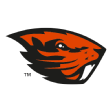- Thread starter
- #1
iowajerms
Well-Known Member
Under-the-radar players ready for a breakout season in 2019
Pop quiz: Who had the lowest interception rate in the SEC last season?
You're probably thinking Tua Tagovailoa, right? It's a good guess, but it's wrong. How about Jake Fromm? He was terrific for Georgia, right? Well, that's the wrong answer, too.
The answer, you might be surprised to learn, is Tennessee's Jarrett Guarantano, who threw only three picks in 246 attempts, despite playing behind one of the country's worst offensive lines.
OK, one more quiz question. Who had the better season?
Long story short, Guarantano was pretty darn good last season, even if you didn't notice. And, of course, the reason you probably didn't notice is because Tennessee was pretty bad.
That's really the true benchmark for Guarantano, too. Adversity was all around him. He was sacked on 8.2% of his dropbacks, good for 106th in FBS. He ranked 119th in FBS with 39% of his throws coming under pressure. And his rushing offense ranked last in the SEC.
But when Guarantano wasn't buried under the pass rush, he was developing into a premier QB. It was just a little tough to notice.
"He's incredibly smart, and football comes fairly easy to him," Vols coach Jeremy Pruitt said. "He's got really good arm strength, he's tough, he's a good athlete. He has a lot of really good intangibles to be a good quarterback."
Not only did Guarantano survive the O-line struggles last year, he thrived. When pressured, he completed 57% of his passes and averaged 9 yards per attempt. No QB in the country was better. Few QBs needed to be.
The good news is Guarantano has more room to grow, and his role in the offense figures to expand, too. He threw only 12 touchdown passes last season, but doubling that number might be a good starting point for 2019.
The better news for Tennessee fans, however, is that Guarantano's development could be matched by that offensive line in 2019. Pruitt has depth at long last, including five-star freshmen Darnell Wright and Wanya Morris, which could allow Guarantano to reach his potential.
Guarantano isn't the only emerging star to fly under the radar last season, however. From the big-play back on a bad Big Ten team to the elite ACC QB who doesn't play for Clemson, these guys don't qualify as household names because their big seasons were obscured or upstaged, but they're nevertheless poised to become stars in 2019.

Reggie Corbin, RB, Illinois
2018 numbers: 128 carries for 1,085 yards and 9 touchdowns. His 8.48 yards per rush average ranked fourth among all FBS backs with at least 100 touches.
Comparison point: If Corbin had maintained his averages over the same number of carries as Clemson's Travis Etienne, he'd have racked up 1,725 rushing yards and 46 carries of 10 yards or more, which would've eclipsed the totals of the Tigers' superstar RB.
Why he's overlooked: Corbin's numbers were hampered by a brutal Illinois offensive line. While Etienne, for example, had less than 8% of his rushes stopped for a loss or no gain, Corbin was stuffed at the line nearly 27% of the time. Look only at runs that crossed the line of scrimmage, and Corbin averaged 12.2 yards per carry, better than any other Power 5 back.
Coach's take: Corbin's evaded tackle rate (18.7%, per ESPN Stats & Information) was second only to Washington State's James Williams among backs with at least 100 carries last year, but that's not what set him apart, according to Illinois coach Lovie Smith. "He has always had the ability to make defenders miss in a phone booth, but his hard work before the 2018 season seemed to give him an extra gear that led to many of his long runs and explosiveness. We continue to work on getting Reggie the ball in space, but he improved all season running between the tackles and showing he can get yardage in different ways."

Isaiah Hodgins, WR, Oregon State
2018 numbers: A September hamstring injury derailed the early part of Hodgins' season, coming on the heels of a dominant 14-catch, 200-yard game against Nevada. From Week 8 -- when Hodgins was finally healthy again -- through the end of the regular season, he had 36 catches for 514 yards. Only Tylan Wallace, Rondale Moore and Jalen Reagor had more among returning Power 5 receivers.
Comparison point: Hodgins essentially matched the production of Notre Dame's Miles Boykin in catches, yards and yards after contact, but he did it with a higher catch percentage, fewer drops and 17 fewer targets.
Why he's overlooked: Hodgins looks the part at 6-foot-4, 203 pounds, and he's always eager to play physical. His lack of blazing speed and last season's hamstring injury kept him from truly emerging as an elite receiver. But as much as he's pegged as a physical threat, he actually has blossomed into one of the better deep-ball receivers, with the eighth-most catches on throws of 10 yards or more among returning Power 5 players. West Virginia's Gary Jennings was the only Power 5 receiver to average more air yards per target (per ESPN Stats & Info) while catching a higher rate of passes.
Coach's take: "He's a good route runner, great hands, above-average speed," Oregon State coach Jonathan Smith said. "He's actually improved his speed, so he can play both games -- physical, can take the corner off the release, or he's got enough wiggle in him to create separation. ... He can stretch it. He can get open on some play-action passes. He's great one-on-one go route, but it's not his forte to just run by people. But he's still effective on the deep stuff."
Pop quiz: Who had the lowest interception rate in the SEC last season?
You're probably thinking Tua Tagovailoa, right? It's a good guess, but it's wrong. How about Jake Fromm? He was terrific for Georgia, right? Well, that's the wrong answer, too.
The answer, you might be surprised to learn, is Tennessee's Jarrett Guarantano, who threw only three picks in 246 attempts, despite playing behind one of the country's worst offensive lines.
OK, one more quiz question. Who had the better season?
- Player A: 59.4% completions, 7.8 yards per pass, 3.4-1 TD-to-INT ratio, 35% conversions on third-down throws
- Player B: 62.2% completions, 7.8 yards per pass, 4-1 TD-to-INT ratio, 41% conversions on third-down throws
Long story short, Guarantano was pretty darn good last season, even if you didn't notice. And, of course, the reason you probably didn't notice is because Tennessee was pretty bad.
That's really the true benchmark for Guarantano, too. Adversity was all around him. He was sacked on 8.2% of his dropbacks, good for 106th in FBS. He ranked 119th in FBS with 39% of his throws coming under pressure. And his rushing offense ranked last in the SEC.
But when Guarantano wasn't buried under the pass rush, he was developing into a premier QB. It was just a little tough to notice.
"He's incredibly smart, and football comes fairly easy to him," Vols coach Jeremy Pruitt said. "He's got really good arm strength, he's tough, he's a good athlete. He has a lot of really good intangibles to be a good quarterback."
Not only did Guarantano survive the O-line struggles last year, he thrived. When pressured, he completed 57% of his passes and averaged 9 yards per attempt. No QB in the country was better. Few QBs needed to be.
The good news is Guarantano has more room to grow, and his role in the offense figures to expand, too. He threw only 12 touchdown passes last season, but doubling that number might be a good starting point for 2019.
The better news for Tennessee fans, however, is that Guarantano's development could be matched by that offensive line in 2019. Pruitt has depth at long last, including five-star freshmen Darnell Wright and Wanya Morris, which could allow Guarantano to reach his potential.
Guarantano isn't the only emerging star to fly under the radar last season, however. From the big-play back on a bad Big Ten team to the elite ACC QB who doesn't play for Clemson, these guys don't qualify as household names because their big seasons were obscured or upstaged, but they're nevertheless poised to become stars in 2019.

Reggie Corbin, RB, Illinois
2018 numbers: 128 carries for 1,085 yards and 9 touchdowns. His 8.48 yards per rush average ranked fourth among all FBS backs with at least 100 touches.
Comparison point: If Corbin had maintained his averages over the same number of carries as Clemson's Travis Etienne, he'd have racked up 1,725 rushing yards and 46 carries of 10 yards or more, which would've eclipsed the totals of the Tigers' superstar RB.
Why he's overlooked: Corbin's numbers were hampered by a brutal Illinois offensive line. While Etienne, for example, had less than 8% of his rushes stopped for a loss or no gain, Corbin was stuffed at the line nearly 27% of the time. Look only at runs that crossed the line of scrimmage, and Corbin averaged 12.2 yards per carry, better than any other Power 5 back.
Coach's take: Corbin's evaded tackle rate (18.7%, per ESPN Stats & Information) was second only to Washington State's James Williams among backs with at least 100 carries last year, but that's not what set him apart, according to Illinois coach Lovie Smith. "He has always had the ability to make defenders miss in a phone booth, but his hard work before the 2018 season seemed to give him an extra gear that led to many of his long runs and explosiveness. We continue to work on getting Reggie the ball in space, but he improved all season running between the tackles and showing he can get yardage in different ways."

Isaiah Hodgins, WR, Oregon State
2018 numbers: A September hamstring injury derailed the early part of Hodgins' season, coming on the heels of a dominant 14-catch, 200-yard game against Nevada. From Week 8 -- when Hodgins was finally healthy again -- through the end of the regular season, he had 36 catches for 514 yards. Only Tylan Wallace, Rondale Moore and Jalen Reagor had more among returning Power 5 receivers.
Comparison point: Hodgins essentially matched the production of Notre Dame's Miles Boykin in catches, yards and yards after contact, but he did it with a higher catch percentage, fewer drops and 17 fewer targets.
Why he's overlooked: Hodgins looks the part at 6-foot-4, 203 pounds, and he's always eager to play physical. His lack of blazing speed and last season's hamstring injury kept him from truly emerging as an elite receiver. But as much as he's pegged as a physical threat, he actually has blossomed into one of the better deep-ball receivers, with the eighth-most catches on throws of 10 yards or more among returning Power 5 players. West Virginia's Gary Jennings was the only Power 5 receiver to average more air yards per target (per ESPN Stats & Info) while catching a higher rate of passes.
Coach's take: "He's a good route runner, great hands, above-average speed," Oregon State coach Jonathan Smith said. "He's actually improved his speed, so he can play both games -- physical, can take the corner off the release, or he's got enough wiggle in him to create separation. ... He can stretch it. He can get open on some play-action passes. He's great one-on-one go route, but it's not his forte to just run by people. But he's still effective on the deep stuff."














